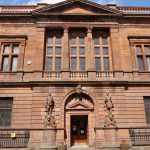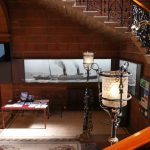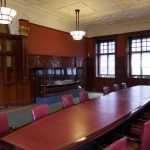Review: Fairfield Govan: visiting a future heritage space
Article DOI: https://dx.doi.org/10.15180/150409
Keywords
Architecture, Clyde, Community, exhibition, Fairfield, Govan, heritage, History of industry, Ship-building
Fairfield Govan: visiting a future heritage space
https://dx.doi.org/10.15180/150409/001This review considers the current multiple uses of an A-listed (Grade 1) 1890s red sandstone building. Fairfield lies in Govan – at the heart of Scottish ship-building – and is a symbol of the changing fortunes of the industry on the River Clyde. Fairfield Heritage is the local community’s response to the decline and changes to an industry which has affected both the commercial and geo-political global landscape for some two hundred years. This review is based upon a visit to Fairfield, conversations with staff, and observations from the literature and digital presence of Fairfield.
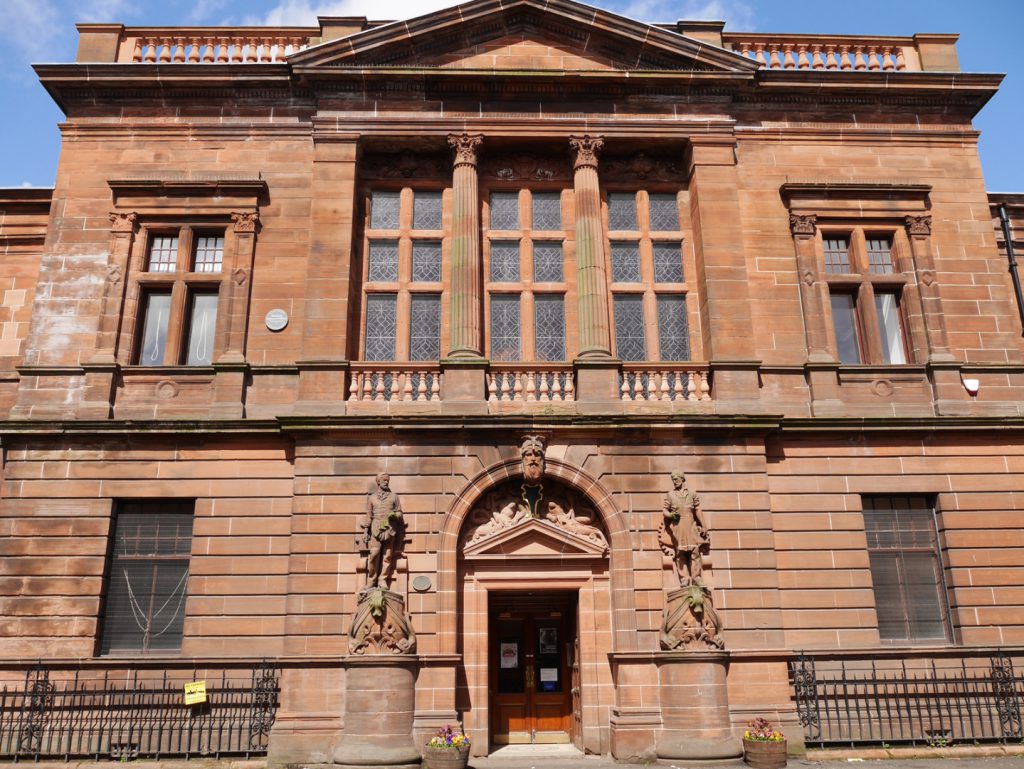
The aim of this review is to illustrate how Fairfield has developed into a multi-functional heritage centre and office space, and a community-focussed education centre. It will also consider the previous roles and uses of the building and look to how this model of offices/heritage centre mash-up may be applied elsewhere. Finally, it elicits a challenge for heritage: to consider how Fairfield is striving to be a force for social change in Govan and how this can be scaled to other places, as other industries decline and change.
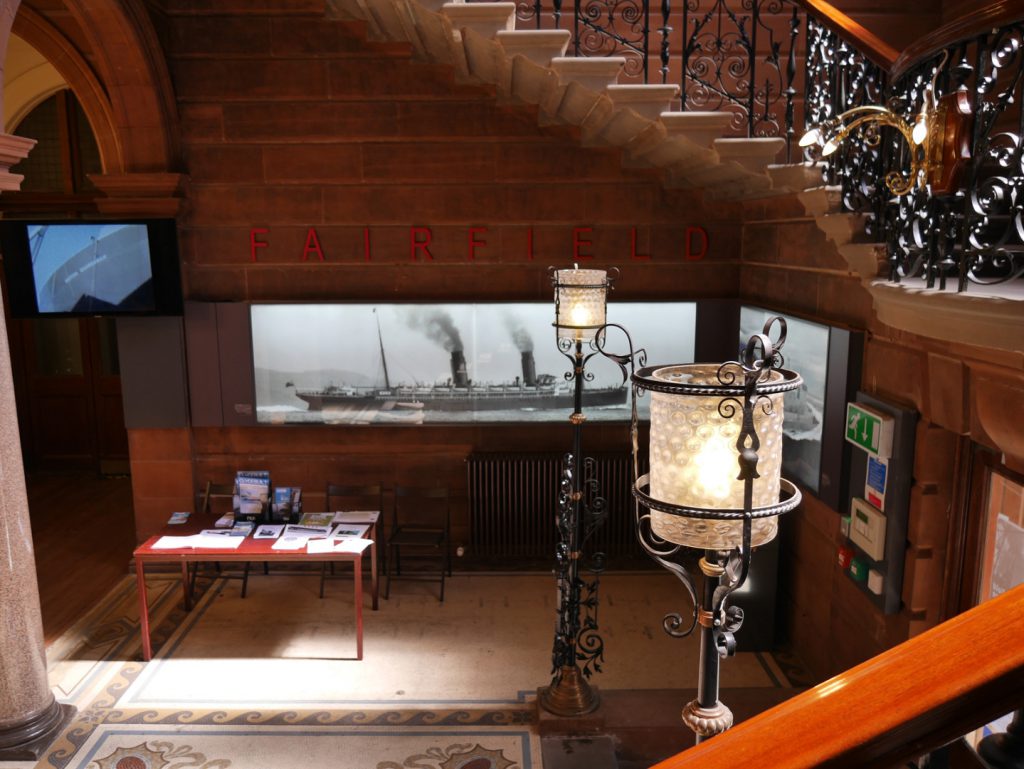
As a global industry, the focus of ship-building has gradually moved over the past fifty years from the industrial West to centres of cheap labour and strong markets. As a consequence, ship-building in Glasgow (and Govan in particular) has virtually disappeared, with surviving operations, such as the BAE Systems ship-building in the Fairfield Yard, representing just a small fraction of an industry that was once a major employer. In order to understand the origins, architecture and, most importantly, the people of Fairfield, we need to acknowledge the beginnings of Glasgow’s heavy industry twins: engineering and ship-building. However, starting in the past and working to the present would do the modern incarnation of Fairfield a disservice. Therefore, this review focuses on the current and future direction of Fairfield, with full acknowledgement of its history. This model of approach, putting the present and future first, is a common one for contemporary heritages today (for examples see Graves-Brown, Harrison & Picinni, 2014). It is an approach that appears to be gaining currency in recognising that heritage is no longer just a ‘visitor attraction’, but projects like Fairfield can play a part in a systemic approach that includes social development.
How did the Fairfield of today take shape and why did it happen? By 2001, the building, which had been built between 1889 and 1891, was vacant. Six years later the building was still empty and damage through weathering had become an increasing issue. Govan Workspace, a local economic development agency who now owns the building, was asked by the previous owner to try and find a new use for this Clyde icon. The result was a restoration project organised and run by a group of dedicated individuals who worked collaboratively to co-design and co-produce the redevelopment of the building itself and the reimagining of the uses to which it could be put. At the core of this project was the recognition that the building and its future functions would reflect its past significance and value through community participation. What those specific roles of participation were had yet to be defined.
Between 2008 and 2012, emergency repairs preceded full restoration and then the adaptation of the interior spaces began. Despite difficulties the group came up with a business plan and through funding streams and partnership collaborations it began to develop an opportunity to save the building with a ‘mixed economy’ usage model. This approach may not necessarily be new, but it is a model that is being applied to significant places that might previously have been turned into a single-purpose heritage centre. This subtle but important difference recognises that local businesses and heritage spaces can function together effectively and serve the purposes of multiple community needs. This illustrates that there was recognition that combined functions, including local businesses, are an integral part of the community. But also that the manner in which those businesses are housed and situated can combine within heritage buildings.
When Fairfield re-opened in July 2014 it was described as a ‘time capsule’. This evokes an image of past glory which has been kept hidden from view. However, once visited it is clear that Fairfield is very much more. The ground-floor comprises former managerial and administrative offices that have been converted into an exhibition/museum space. Additional rooms are provided for education purposes and the original board room has been retained – it’s refreshing to see a portrait of a woman on the boardroom wall.
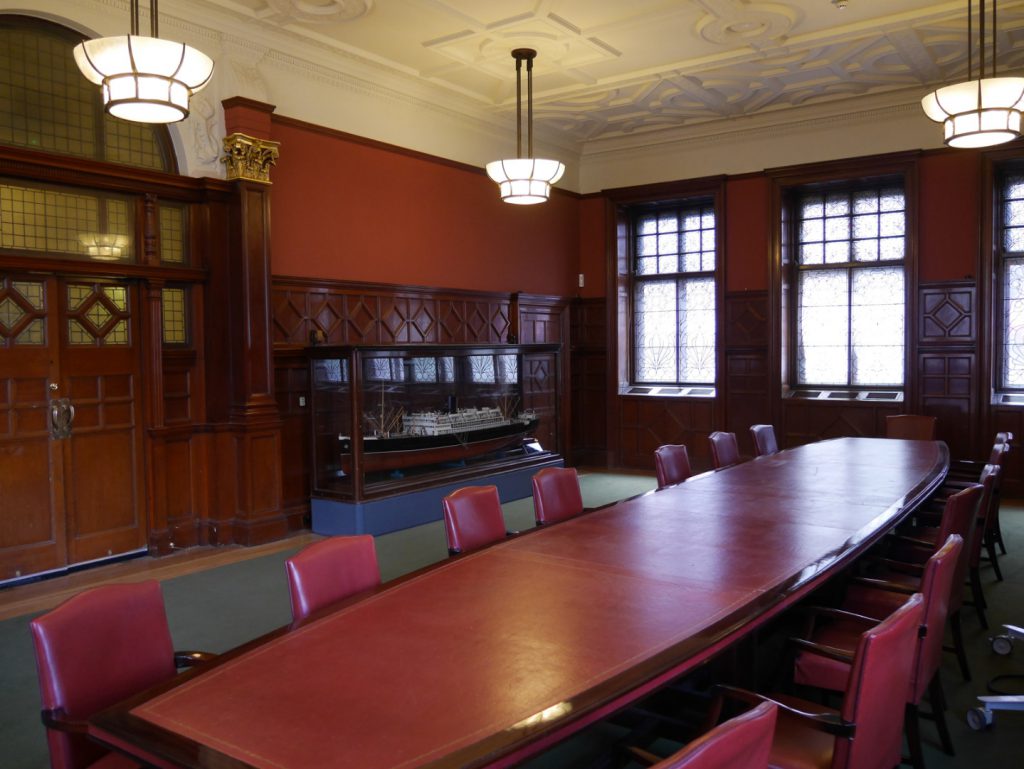
The building is also now home to an art gallery; it provides exhibition space, is a museum to Govan ship-building, an educational space, extensive and adaptable office spaces, and remains a symbol of civic pride. Ship-building and engineering are symbolised by the statues either side of the front door and it is these two parallel strands of heavy industry that are developed in the gallery and exhibitions rooms on the ground floor. Upstairs, work goes on apace in the rented office spaces. To date, one of the best clients has been BAE themselves, the company recognising the value of the space and the opportunity to use it both for corporate and social functions.
As we go up the grand staircase, the archaeologist in me noticed the evidence of the traffic of time. There is extra wear on the inner tread of each stair, always on the inner handrail side. This reflects a need for speed when staff travelled up and down the stairs and reflects the efficient business that built the ships in the adjacent fabrication yard. Upstairs we see an altogether changed building; one of white walls and modern mezzanine floors. This is where the local meets global, where floor space is rented out to local businesses and the income fed back into Fairfield and Govan Workspace social enterprise agency. The offices provide amazing facilities and the light levels are unsurpassed. With north-facing windows and roof lights, the light quality is consistent and clear. All this has resulted from the original architects being given the brief to provide spaces for printers and draftsmen who required consistency and the quality of light provided by a northern aspect. Architectural plans of the original building demonstrate its functional design, such as managers having their own staircases that would take them directly from their first floor offices down to their areas of responsibility; engine-building or ship fabrication. This was management hierarchy embodied into architectural design, with the aim of maximising manufacturing output and sustaining the company’s order books.
Today, the heritage centre hosts oral history projects and it receives donations of objects from local people who have friends or relatives who worked in the yard. This means that it is accruing an archive. The heritage exhibitions space is well laid out (chronologically) and includes an enormous amount of information. It combines personal stories with evidence of the global influence of the ship-building/engineering industries. The exhibitions cleverly use the space provided by the wood-panelled rooms and there is an array of mediums through which the information is presented. These range from digital interactive maps to full height images of riveters on the walls. Screens present archive footage from the Scottish Screen archive and a 3D digital interactive display, developed with the Glasgow School of Art Digital Design Studio, enables the user to travel along the Clyde, through space and time.
Fairfield Heritage has developed fruitful networks with the public and many volunteers are sustaining their work strands. They are currently preparing a schools programme, community participation and education programmes. Volunteers contribute to the running of the building and are also engaged in a steering group which ensures that they are integral to the process of taking the project forward. The volunteers feed in their ideas for success but they also hold the key to understanding how some of the manufacturing processes were undertaken – in some cases using their first-hand experiences. For example, some of the tools in the exhibition cases were used by the people who are now volunteering to run the heritage centre.
So how can Fairfield help other heritage places to become centres for social cohesion, economic development and progressive change for communities that have been affected by industrial decline? I think one of the clues lies in the embedded nature of many of the people who undertake the hard work to get these projects off the ground. People, who live and work in the locations of the heritage project, bring their networks, contacts and ‘embeddedness’ to bear on fruitful projects. But once projects are up and running, their success is as much due to the skills of the fundraisers and co-ordinators who sustain the places, as well as the hardworking volunteers with whom they collaborate.
The origins of Fairfield lie in the early days of ship-building on the River Clyde at Govan, and the yard engineering works and docks combined to build over 750 vessels from 1886. But the building today, its uses and the ethos of Fairfield Heritage is a model of how heritage centres can be developed thorough partnerships to create new uses for old buildings, and invest civic pride in specific spaces and places. Most importantly, Fairfield exemplifies a place where memory, building fabric and people with passion, drive and commitment can develop new socio-economic models that wrap community heritages with local businesses.



